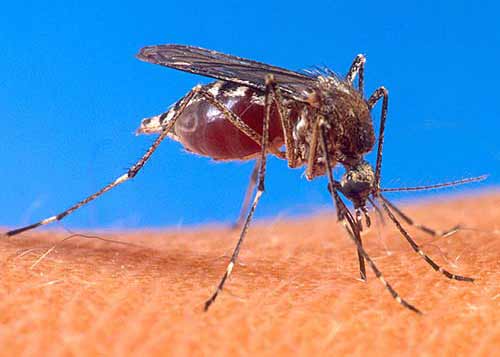Bugs Pose Bioterror Threat

An entomologist warns in a new book that terrorists could use insects as weapons, according to an article in today's Telegraph.
While the idea is not new, the story is thin on details and long on speculation, however. It quotes Jeffrey Lockwood, professor of entomology at Wyoming University and author of "Six-legged Soldiers: Using Insects as Weapons of War," as saying it would be "relatively easy" for terrorists to unleash disease on a country by bringing in infected insects in a suitcase on a regular airline flight.
Lockwood said it would "probably be much easier" to unleash Rift Valley Fever or some other disease than developing a nuclear or chemical weapon. "The raw material is in the back yard," he said.
Challenges to the scheme
Using insects for bioterror would not be simple, however.
First problem: Terrorists would need the help of a learned scientists and a lab capable of infecting and nurturing insects. While all quite possible, it's not exactly easy.
Further, airline baggage inspections, though not perfect, just might spot a suitcase full of bugs.
Get the world’s most fascinating discoveries delivered straight to your inbox.
Bringing infected insects into an area does not mean everybody dies (or even anybody). There is the challenge of dispersing the bugs (see the next paragraph — our government knows exactly how to do this). And the insects themselves might not survive their new environment long enough to infect anyone or mate, and the whole scheme would stop there.
Sure, like other threats, this is one that governments should (and no doubt do) consider. In fact the U.S. government knows all about the threat. During the Cold War, the U.S. Army studied entomological warfare. It even tested the idea by dumping uninfected mosquitoes over U.S. cities.
Bioterrorism using insects need not necessarily be aimed at killing people directly. As far back as 1995 the U.S. military recognized the threat of insect-terror in the form of potential crop destruction.
"The US Department of Agriculture recently identified 53 animal diseases which are nonindigenous or foreign, which, if introduced into this nation, would adversely impact the livestock industry," wrote U.S. Air Force Lt Col Robert P. Kadlec. If a bug were introduced, "uncontrolled insect breeding may cause subsequent crop destruction." In fact, Kadlec noted, non-military, accidental import of alien bugs have already caused billions of dollars in crop damage. Even as you read this, some U.S. forests are being decimated by invasive bugs from other parts of the world.
During the Civil War, the Union was accused of introducing the harlequin bug Murgentia histrionica into the South, where it caused considerable crop damage. But many researchers now think the bug moved south on its own.
History of war bugs
Using creatures — even dead humans — in warfare is nothing new.
Japan used low-flying planes during WWII to spray plague-infected fleas on the Chinese, resulting in up to 500,000 deaths, according to estimates.
Hannibal is purported to have won a naval victory over king Eumenes of Pergamon in 190 BC by firing earthen vessels full of snakes into the king's ships. Armies for ages have dumped dead humans and animals into wells and waterways to infect water supplied. Mongol tartars were said to break a three-year siege of Feodosia by catapulting plague-infested cadavers over the city walls. [Read more on bioweapons in war.]
Lockwood writes in his book that early humans probably threw bees nests into caves to force the enemy out.
Today, the U.S. military funds research into "cybugs," or insect cyborgs. Cornell University researchers recently implanted electronic circuit probes into tobacco hornworms. After they turned into moths, their muscles were controlled with the implants.
Robert Roy Britt is the Editorial Director of Imaginova. In this column, The Water Cooler, he takes a daily look at what people are talking about in the world of science and beyond.
Robert is an independent health and science journalist and writer based in Phoenix, Arizona. He is a former editor-in-chief of Live Science with over 20 years of experience as a reporter and editor. He has worked on websites such as Space.com and Tom's Guide, and is a contributor on Medium, covering how we age and how to optimize the mind and body through time. He has a journalism degree from Humboldt State University in California.



